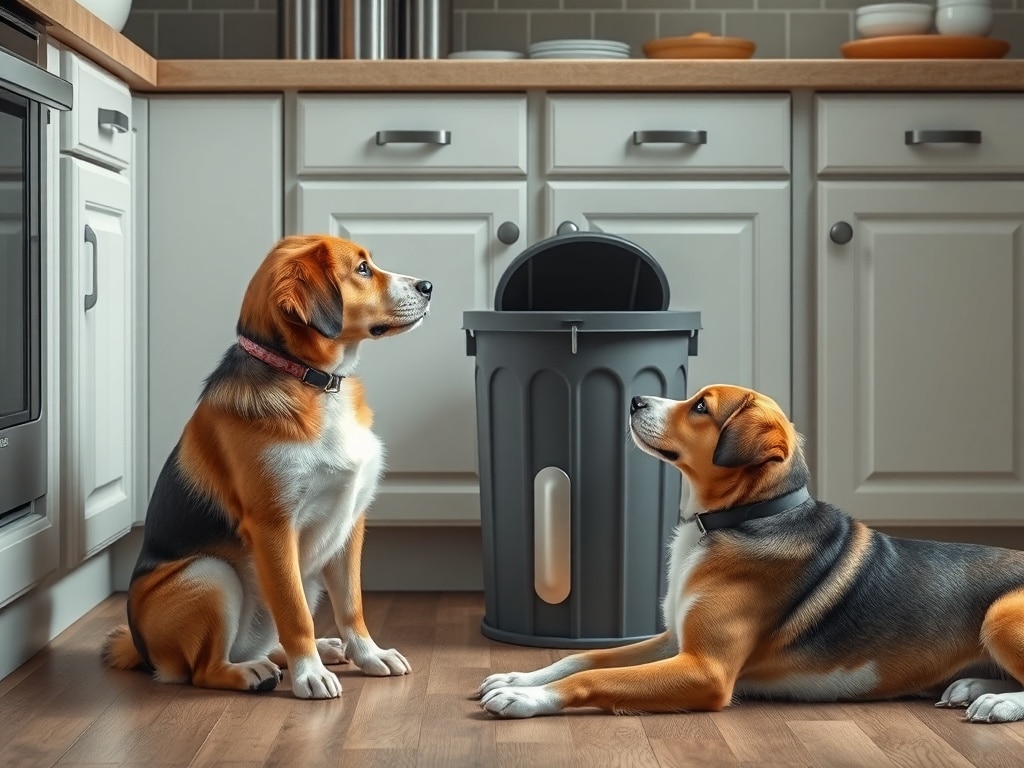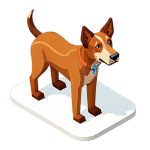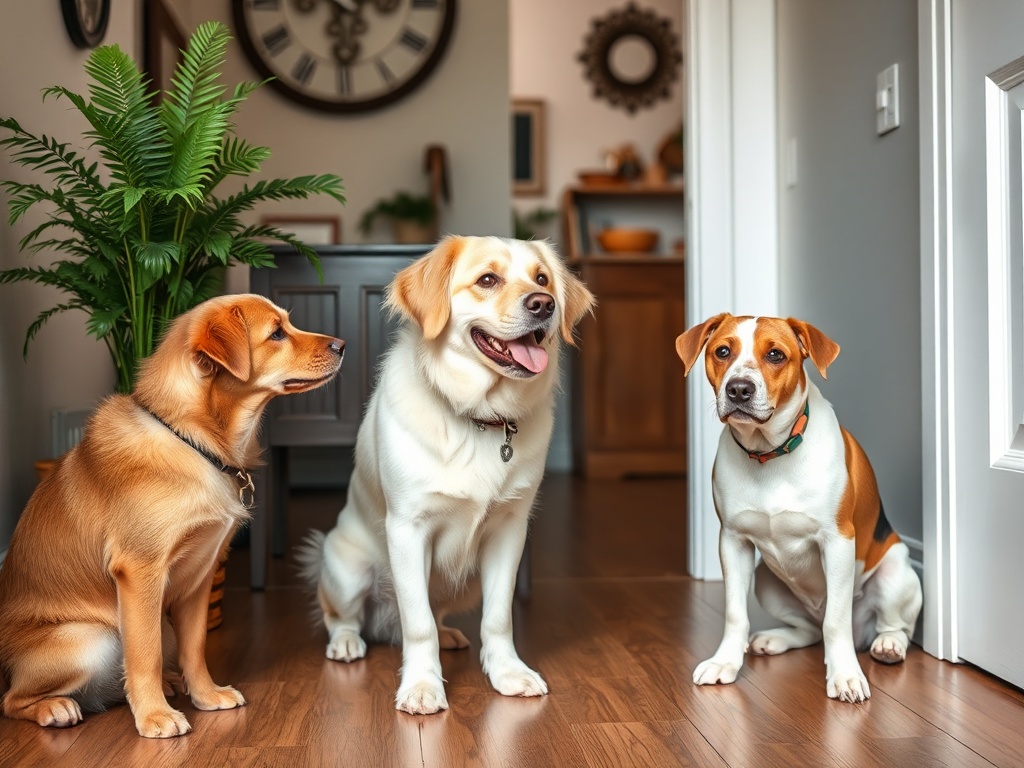Pet Proofing Your House: A Dog Owner's Guide to a Safe Haven
What is Pet Proofing and Why Does It Matter?
Imagine your home from your dog's perspective: a landscape of tempting smells, chewable objects, and potential dangers lurking around every corner. Pet proofing means taking proactive steps to eliminate these hazards, creating a safe and secure environment where your furry friend can thrive. It's not just about protecting your belongings; it's about ensuring your dog's health and well-being.
Why is it so important? Dogs, especially puppies, explore the world with their mouths. They're curious, playful, and often indiscriminate about what they ingest. This can lead to accidental poisonings, choking hazards, and injuries that could be easily prevented with proper pet proofing measures. Furthermore Summer Dog Safety Secrets: Keep Your Pup Cool & Happy helps ensure that every season is a comfortable one for your pet.
Common Household Toxins: What Lurks in Your Home?
Many common household items are surprisingly toxic to dogs. Knowing what to watch out for is the first step in creating a safer home.
- Medications: Both prescription and over-the-counter drugs can be deadly. Keep all medications, including vitamins, in secure, child-proof containers and out of reach.
- Cleaning Supplies: Bleach, detergents, disinfectants, and other cleaning products contain harsh chemicals that can cause severe burns internally as well as burning their paws. Store these items in locked cabinets or high shelves.
- Pesticides and Herbicides: Garden chemicals, including lawn fertilizers and weed killers, are extremely hazardous. Follow label instructions carefully and keep your dog away from treated areas until they are completely dry.
- Certain Foods: Chocolate is the best known toxin, but onions, garlic, grapes, raisins, avocados, and xylitol (an artificial sweetener) are also dangerous. Never leave these foods unattended. Be sure to read Beyond Chocolate: Surprising Foods That Are Deadly to Dogs.
- Antifreeze: This sweet-tasting liquid is extremely poisonous, even in small amounts. Clean up any spills immediately and store antifreeze in a sealed container out of reach.
Pet Proofing Your Kitchen: Food, Cleaners, and Appliances
The kitchen is often a hotspot for potential hazards. Here's how to make it safer:
- Secure Food Storage: Keep all food items, including pet food, in airtight containers that your dog cannot access.
- Clean Up Spills Immediately: Even small spills of sugary or fatty foods can attract your dog.
- Child-Proof Cabinets: Install child-proof latches on cabinets containing cleaning supplies, chemicals, or anything else that could be harmful.
- Appliance Safety: Unplug small appliances when not in use to prevent accidental activation. Keep oven doors and dishwasher doors closed.
- Trash Can Security: Use a trash can with a secure lid that your dog cannot open.
Pet Proofing Your Living Room: Furniture, Electronics, and Decor
The living room is where families spent most of their time. Protect your dog like one of your children.
- Protect Furniture: Cover furniture with slipcovers or throws to protect them from scratches and chewing. Consider using bitter apple spray to deter chewing.
- Secure Electronics: Tuck electrical cords and cables behind furniture or use cord protectors to prevent chewing. Secure TVs and other large electronics to the wall to prevent them from tipping over.
- Remove Small Objects: Keep small objects, such as remotes, batteries, and decorative items, out of your dog's reach.
- Houseplant Safety: Many houseplants are toxic to dogs. Research which plants are safe and keep all others out of reach.
- Fireplace Safety: Use a fireplace screen to prevent your dog from getting too close to the fire. Store firewood in a secure location.
Pet Proofing Your Bathroom: Medications and Toiletries
Bathrooms have many dangers for dogs and are frequently filled with pills and sprays and things that smell good but aren't meant to be consumed.
- Secure Medications and Toiletries: Store all medications, toiletries, and cosmetics in locked cabinets or drawers.
- Keep the Toilet Lid Closed: Some dogs enjoy drinking from the toilet, which can expose them to harmful bacteria and cleaning chemicals. There are toilet seat attachments, or toilet locks available for purchase. Consider buying that.
- Hide Razors and Sharp Objects: Keep razors, scissors, and other sharp objects out of reach.
- Unplug Appliances: Unplug hair dryers, curling irons, and other electrical appliances when not in use.
Pet Proofing Your Bedroom: Personal Items and Sleep Space
Make your bedroom a safe and comfortable space for your dog.
- Store Personal Items: Keep jewelry, clothing, and other personal items in drawers or closets to prevent chewing.
- Secure Bedding: Use durable bedding that can withstand chewing and scratching.
- Create a Safe Sleep Space: Provide your dog with a comfortable bed or crate where they can feel safe and secure.
- Keep Drawers and Closets Closed: Prevent your dog from accessing potentially harmful items inside drawers and closets.
Electrical Safety: Covering Cords and Outlets
Electrical shock can be life-threatening. Take these precautions to protect your dog:
- Cord Covers: Use cord protectors or concealers to prevent your dog from chewing on electrical cords.
- Outlet Covers: Install outlet covers or safety plugs to prevent your dog from sticking their nose or tongue into electrical outlets.
- Unplug Unused Appliances: Unplug appliances when not in use to reduce the risk of electrical shock.
Choking Hazards: Toys, Small Objects, and Trash
Choking is a common emergency for dogs. Minimize the risks with these tips:
- Choose Safe Toys: Select toys that are appropriate for your dog's size and chewing habits. Avoid toys with small parts that can be easily swallowed.
- Supervise Playtime: Always supervise your dog when they are playing with toys.
- Keep Small Objects Out of Reach: Remove small objects, such as coins, buttons, and paper clips, from your dog's reach.
- Secure Trash Cans: Use trash cans with secure lids that your dog cannot open.
Creating a Dog-Friendly Environment: Enrichment and Safe Spaces
Pet proofing isn't just about removing hazards; it's also about creating a stimulating and comfortable environment for your dog.
- Provide Enrichment: Offer a variety of toys, puzzle feeders, and chew toys to keep your dog mentally stimulated.
- Create Safe Spaces: Provide your dog with a comfortable bed or crate where they can retreat when they feel overwhelmed or need a break.
- Regular Exercise: Ensure your dog gets plenty of exercise to burn energy and reduce boredom.
First Aid Kit for Dogs: Essential Items and Knowledge
Be prepared for minor injuries and emergencies with a well-stocked first aid kit.
- Essential Items: Include items such as antiseptic wipes, gauze pads, bandages, adhesive tape, hydrogen peroxide (for inducing vomiting – use only under veterinary guidance), a thermometer, and your veterinarian's contact information.
- Learn Basic First Aid: Take a pet first aid course to learn how to handle common emergencies, such as cuts, burns, and choking.
Training and Supervision: Preventing Unwanted Behaviors
Training and supervision are essential for preventing your dog from engaging in dangerous behaviors.
- Basic Obedience Training: Teach your dog basic obedience commands, such as leave it, drop it, and stay.
- Supervise Your Dog: Always supervise your dog, especially when they are in new environments or around potential hazards.
- Consistency is Key: Be consistent with your training and rules to avoid confusing your dog.
Breed-Specific Considerations
Certain breeds may have specific tendencies or sensitivities that require extra pet proofing measures.
- Terriers: Known for their digging and chewing habits, terriers may require extra attention to electrical cords and furniture.
- Hounds: With their strong sense of smell, hounds may be more likely to get into food or trash.
- Small Breeds: Small breeds are more susceptible to certain toxins and may require extra precautions with medications and cleaning supplies.
DIY Pet Proofing Solutions
Many pet proofing solutions can be easily implemented using common household items.
- Cardboard Barriers: Use cardboard boxes or panels to block off access to certain areas or items.
- Deterrent Sprays: Use bitter apple spray or other deterrent sprays to discourage chewing.
- Repurposed Items: Use old towels or blankets to cover furniture or create makeshift barriers.
When to Call a Professional
In some cases, you may need to seek professional help with pet proofing.
- Severe Behavioral Issues: If your dog has severe chewing or destructive behaviors, consult with a professional dog trainer or behaviorist.
- Complex Home Layouts: If you have a complex home layout with many potential hazards, consider hiring a professional pet proofing service.
- Uncertainty: If you are unsure about how to properly pet proof your home, don't hesitate to seek expert advice.


